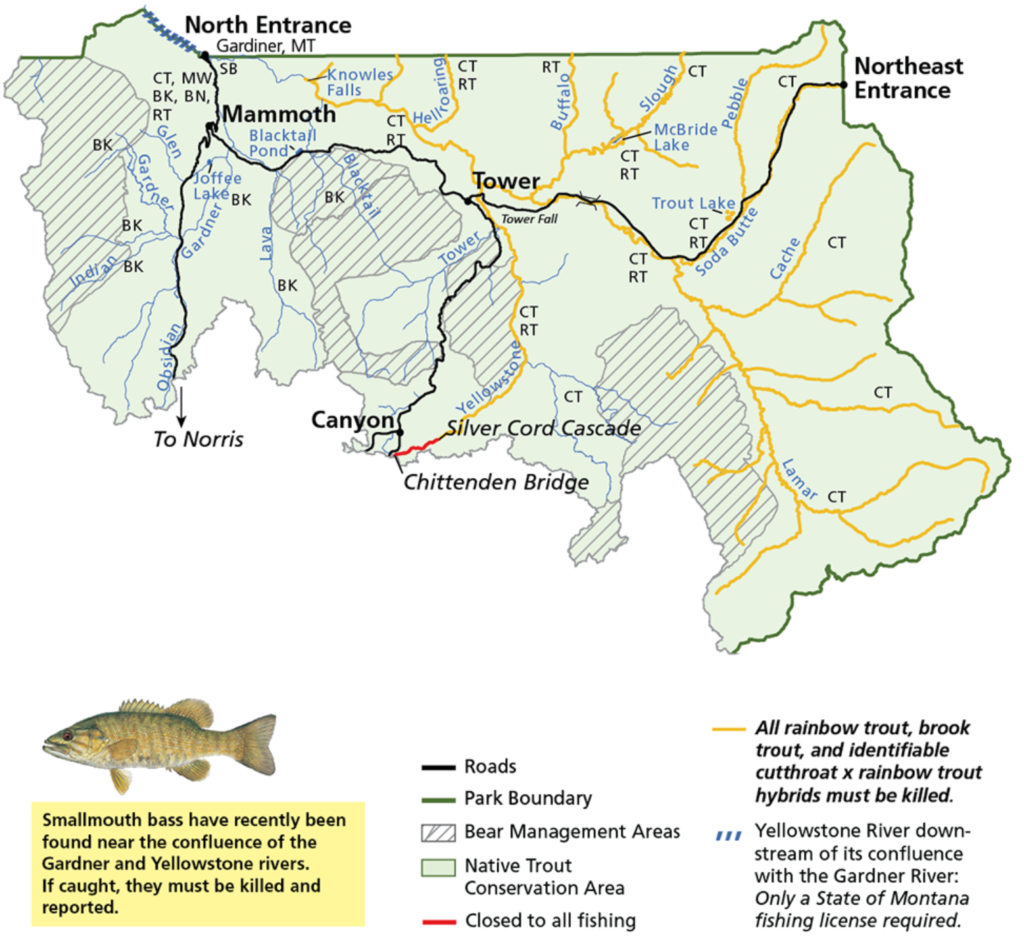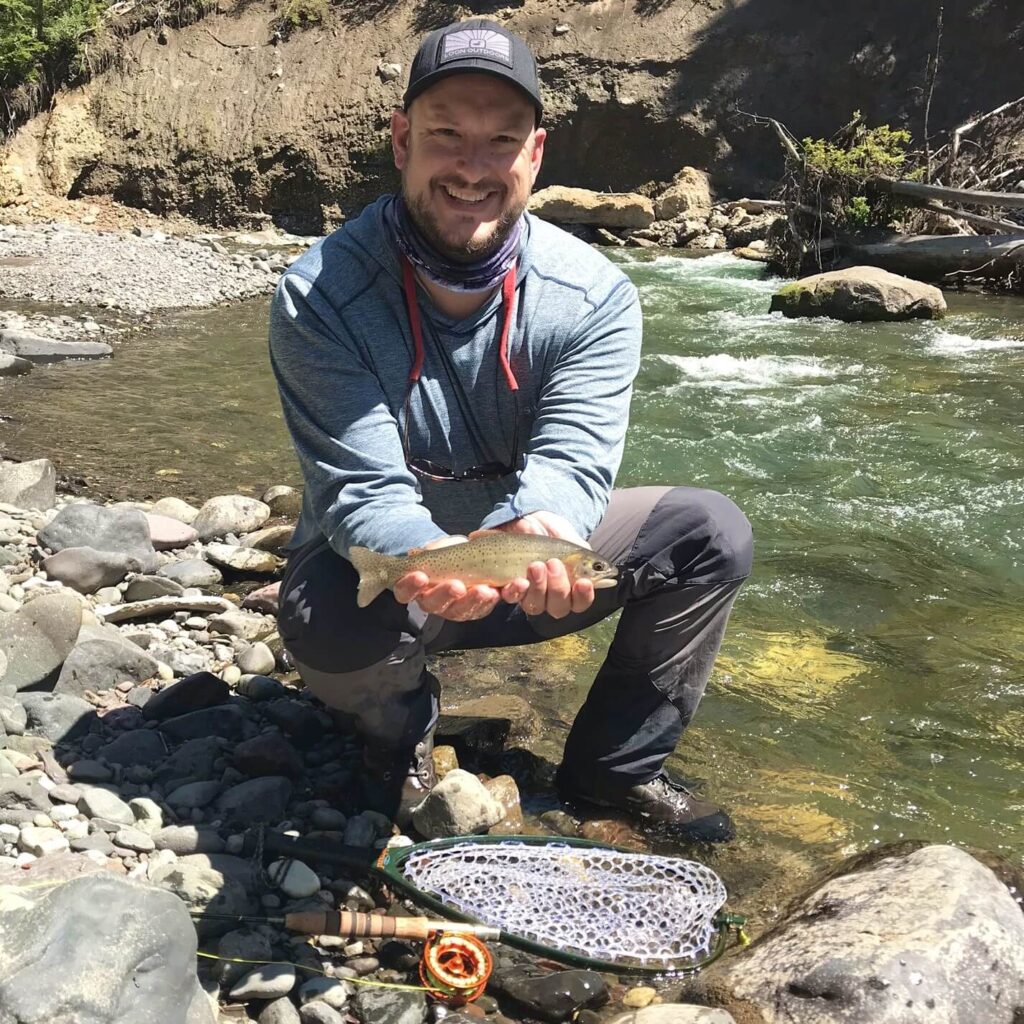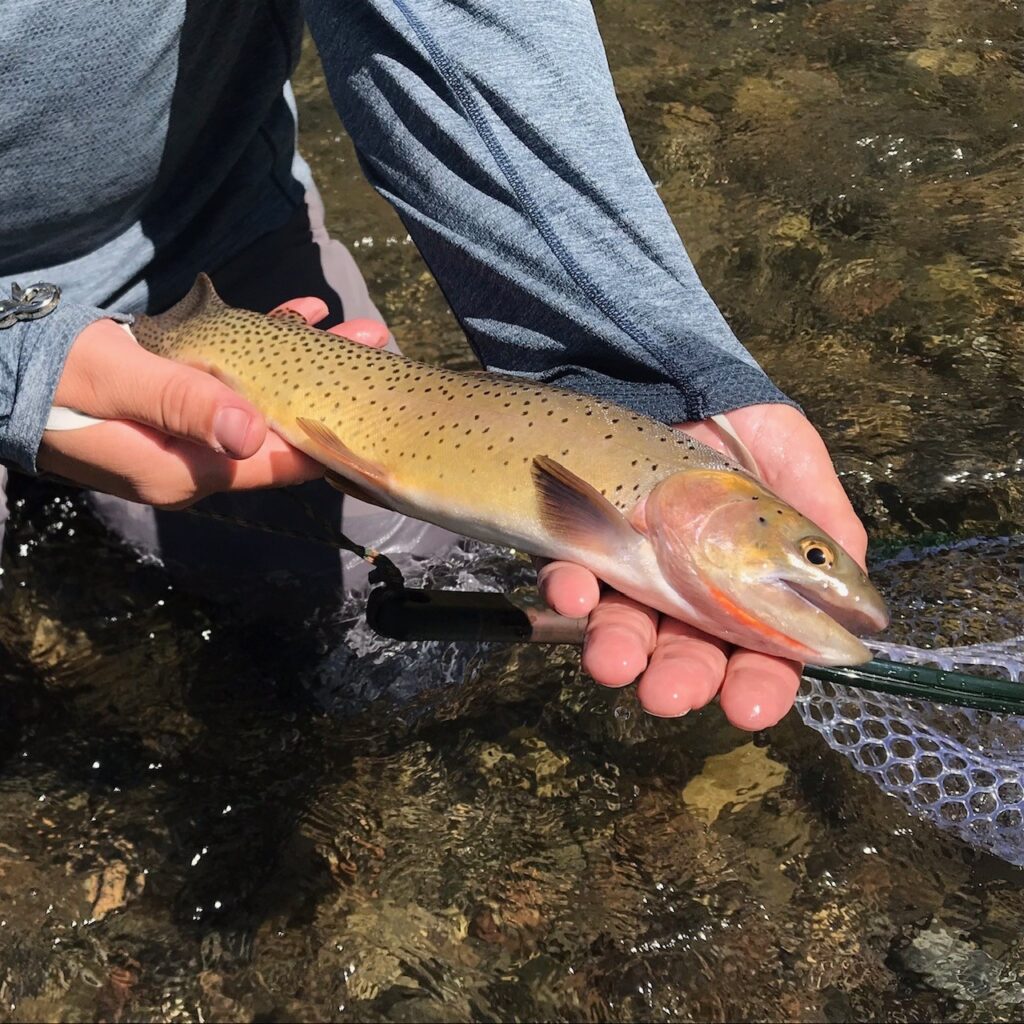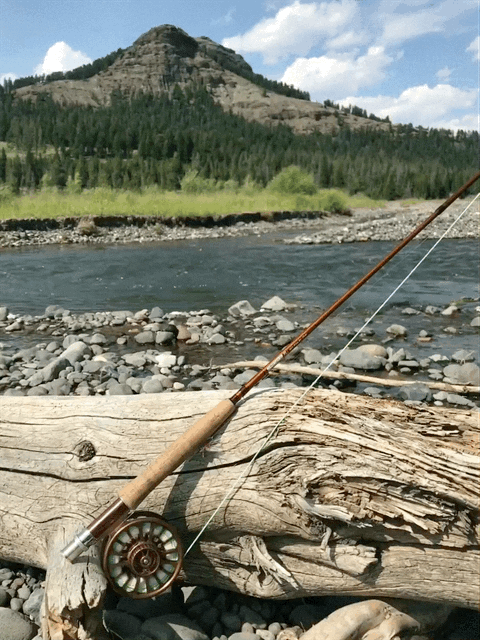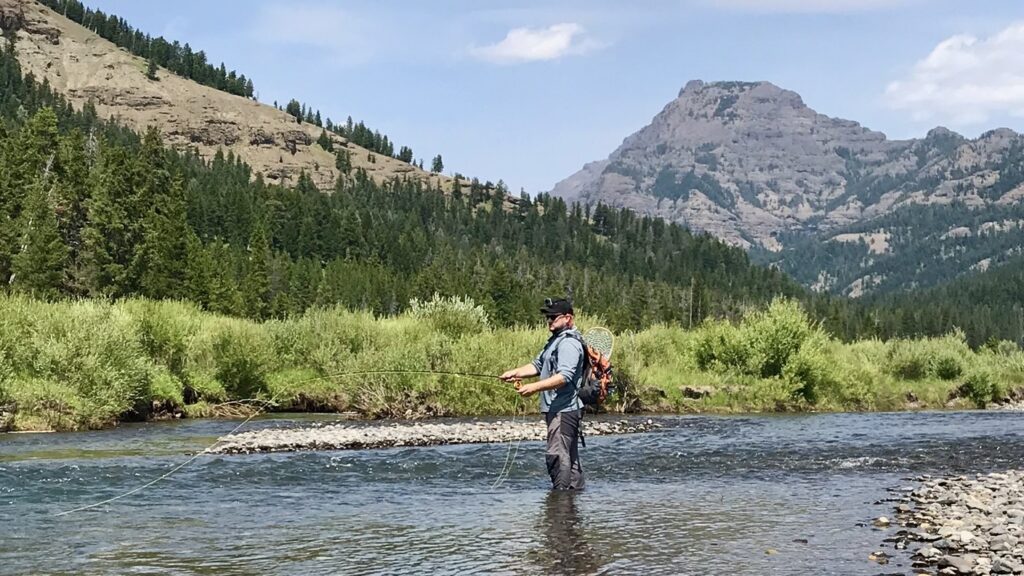If you are an angler looking for the experience of a lifetime, I recommend fly fishing Yellowstone’s Soda Butte Creek.
Beartooth Scenic Highway to Yellowstone's Northeast Entrance
As we sped along, each new switchback flooded the senses. Joel pushed the limits of his Subaru Outback like an Indy car driver on a familiar track. It felt like we were racing the sun to the top of Beartooth Pass. At 10,947 feet the pass marks the highest point along the Beartooth Scenic Highway, a beautiful stretch of road connecting Red Lodge and Cooke City, Montana. It is hailed as one of the most scenic drives in the U.S. but today we had little time to stop and enjoy it’s treasures. Panoramic alpine vistas rewarded us, but not before conquering switchbacks, guardrails, and thousand-foot drop-offs. No shortage of adrenaline helped me forget the 4:00 am alarm clock.
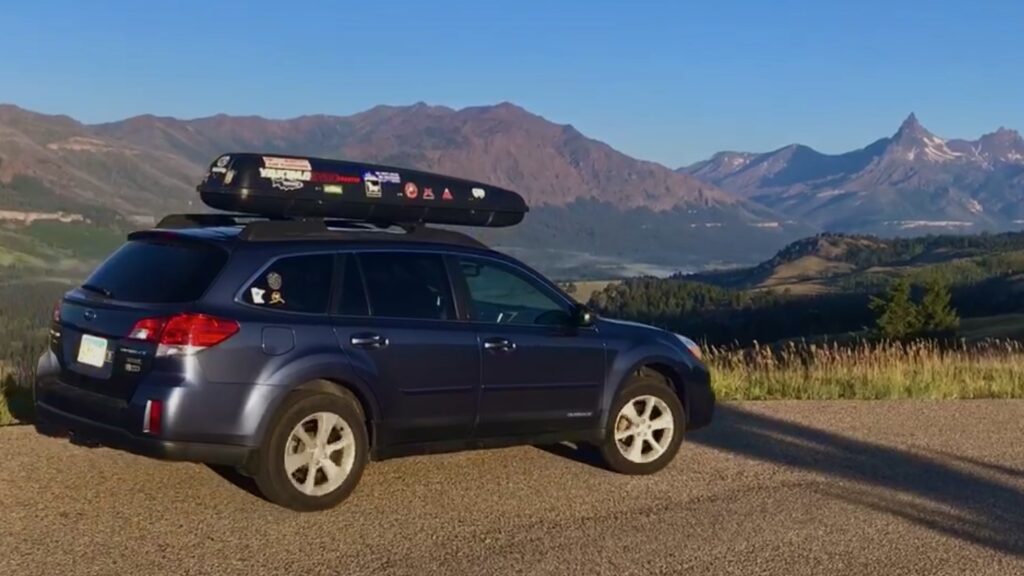
Hours before, Joel and I repeated a routine we have become all too good at: quickly breaking camp in the dark and setting off to our next destination. On this last day in July, we were headed for Yellowstone National Park. The goal: secure a coveted first-come first-serve campsite in the park’s remote northeast corner. If we could get there early enough, we would use Pebble Creek Campground as a base for fly fishing Yellowstone’s Soda Butte Creek.
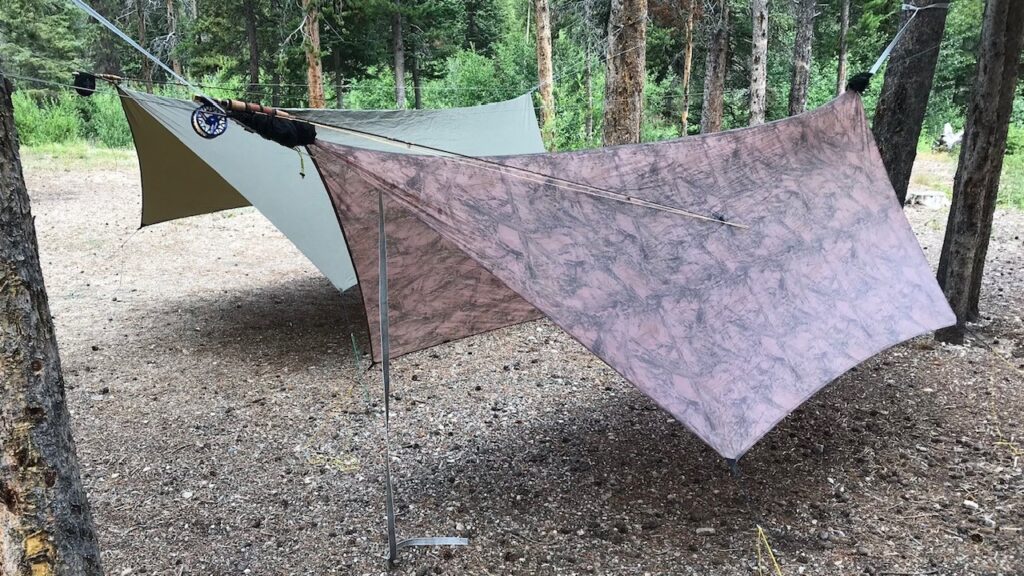
The Beartooth Scenic Highway winds its way through a million-plus acre wilderness. As part of the Greater Yellowstone Ecosystem it includes some of the crown jewels in Americas system of public lands. The Beartooth Highway is surrounded by three national forests (Custer NF, Gallatin NF, and Shoshone NF), runs parallel to the Absaroka-Beartooth Wilderness, and has a terminus at the Eastern entrance to Yellowstone National Park. Rushing past the unique, high-alpine ecosystems along the Beartooth Plateau did not sit well with me. I knew I was missing something special. Alpine tundra, glacial lakes, waterfalls, and forested valleys were all here waiting to be explored. Sure we stopped to walk on a glacier and take a few pictures, but secretly I wanted more time. Sadly, we had to push on, with no guarantee we would even get one of the few campsites we sought in Yellowstone’s remote northeast corner.


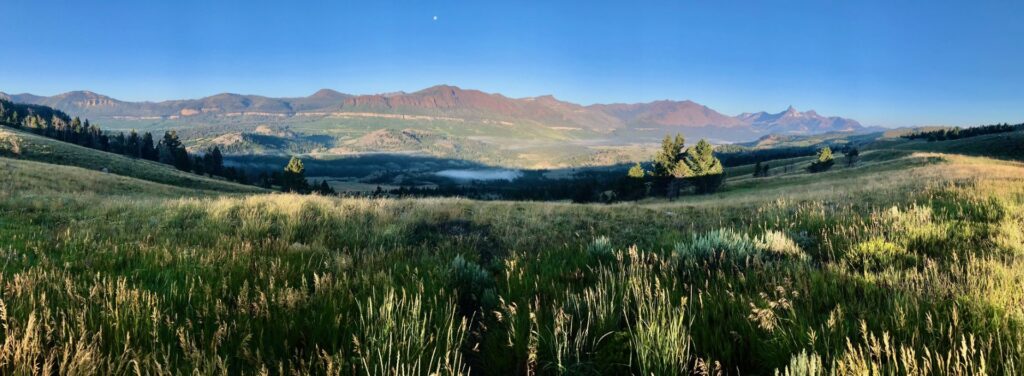
Camping in Yellowstone's Northeast Corner
We pulled into Pebble Creek Campground around 7:00 am. The campground host was already busy organizing cars into a que. With eager anticipation we waited to see if being second in line would secure a spot. As she approached the window with a smile, we were relieved to learn there were several campsites opening up. Joel began filling out the registration form and I got out to stretch and look around. It didn’t take long for me to to run into William. He and several buddies were wrapping up their annual Yellowstone fishing trip. He insisted we take the site they were vacating assuring me it was “the best site in the whole campground”. Site #23 sat back in the tent-only area, a quiet, beautiful part of the campground right alongside Pebble Creek. This proved to be the first of several pieces of good advice we got from William and his friends.
For the next few hours, the campsite resembled a well a choreographed routine as our two groups shuttled gear to and from the campsite and parking area. We tried our best not to intrude but our new friends from site #23 seemed eager to share their experiences from the previous week. The guys hailed from Colombia, SC and got together every year to fish this part of Yellowstone. According to their reporting, fishing had been slower than past years. They found fewer fish and the ones they did catch were smaller in size. Not exactly the news we were hoping for. We did not let this dampen our spirits. I’m not sure anything could have at this point. We had successfully secured a campsite and were about to fish Yellowstone National Park for the first time. Our excitement was further bolstered when William gave us a crude map highlighting two productive holes along Soda Butte Creek not far from the campground. By the time we said our goodbyes, we had a great campsite, a basic fishing report, and “The Map”.
We loved Pebble Creek Campground for its remoteness, scenery, and easy access to outstanding fishing and wildlife viewing. There are two fishing options within walking distance of the campground as it sits near the confluence of Pebble Creek and Soda Butte Creek. By day we explored both with much success. In the evenings we took a short drive over to the Lamar Valley where Bison are plentiful. Summer is calving season, and we saw many bison calves among the herds here. The Lamar Valley also provides Yellowstone visitors with their best chance to see Grizzly Bears and Wolves. During our three-day visit, we were lucky enough to see both.
Pebble Creek Campground offers a much more intimate camping experience than most other Yellowstone NP campgrounds. For starters, the campground only has 27 sites while many of the park’s developed campgrounds number in the hundreds. I would describe the camping at Pebble Creek as remote and primitive. The only real services are water, vault toilets and trash collection. Each site included a picnic table, fire ring, and food storage container. We were happy to have secured one of the walk-in tent sites which sit along the creek and back up to it’s canyon walls. These sites were wooded, but there are some open campsites in Pebble Creek Campground as well.
Fishing Yellowstone: Soda Butte Creek

With camp set up, we drove the thirteen miles back to Cooke City for breakfast and a fishing license. Yellowstone National Park has its own regulations and a separate YNP Fishing Permit is required. Yellowstone’s fishing season runs from Memorial Day through the last day in October. The Lamar River and its tributaries (Soda Butte Creek, Pebble Creek, Slough Creek) are high elevation streams. The fishing in this part of the park does not begin until after the second week in July when runoff clears. We timed our trip for the first week of August to ensure that both spring runoff and the cutthroat spawning season would be over.
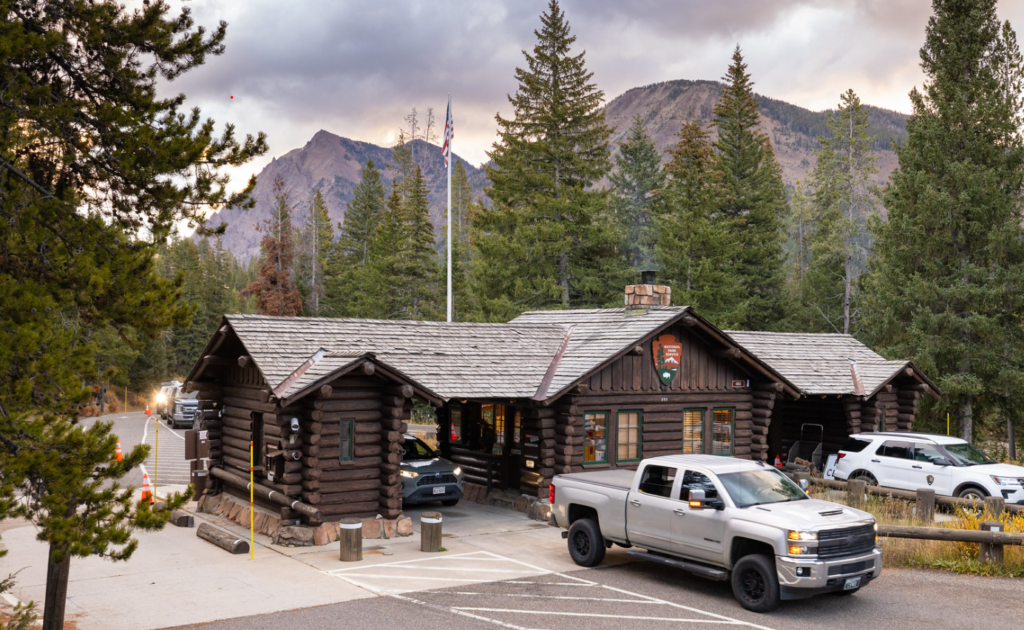
By 11:00, we were back in the park and ready to begin our Yellowstone fishing adventure. As we drove through the park’s northeast entrance station, fishing permit in hand, I reflected on the countless times Joel and I had talked about fishing in Yellowstone someday. Now, those dreams were about to become a reality. We would begin our adventure by fly fishing Yellowstone’s Soda Butte Creek, a small stream with very easy access. The park’s Northeast Entrance Road parallels Soda Butte Creek for its entire length. I don’t know of any other spot in the lower 48 where you can potentially catch a 20+ inch native cutthroat a few hundred feet from your car. You will still have to do some exploring but you don’t have to hike for miles to find productive water. Thanks to William we had a head start. I studied his map as Joel drove us back toward Pebble Creek Campground.
“The Map” was nothing more than a crude sketch on the back of a National Park Service campground fee envelope. It’s only identifying features included a cluster of trees in the vicinity of the Trout Lake Trailhead, an island dividing Soda Butte Creek into two channels, and two large boulders where the creek gets funneled into a fast chute. Heading west on Northeast Entrance Road, we drove about a half mile past the trailhead parking lot and made a U-turn. On our way back we found a cluster of trees on the creek side with a small pullout. “This seems like as good a place as any”, we thought. No real trail to the creek existed. We carefully picked our way through the sagebrush while avoiding piles of buffalo dung. We didn’t make it very far before several bison blocked our path to the creek. I wasn’t willing to try my luck against a 2000-pound bison, so we took a much longer route and gave these magnificent animals plenty of space.
We entered Soda Butte Creek upstream of the heavily-fished meadow section that lies above its confluence with the Lamar River. We were just below a small mini-canyon and planned to fish our way through it for the rest of the afternoon. I started fishing with a hopper/dropper rig spearheaded by a size 8, tan, chubby chernobyl. As we worked the larger channel to the right side of the island, we were not having any luck. That all changed when we came to where two huge boulders pinched the creek into a large pool. I gave Joel first crack at this promising hole and climbed up to get a view from above. It wasn’t long before a large fish charged at his subsurface fly. In his newfound excitement, Joel urged me to get down there and fish the hole with him, but I knew it wasn’t really big enough for two anglers. I gave him some space and happily took photos of him fishing.
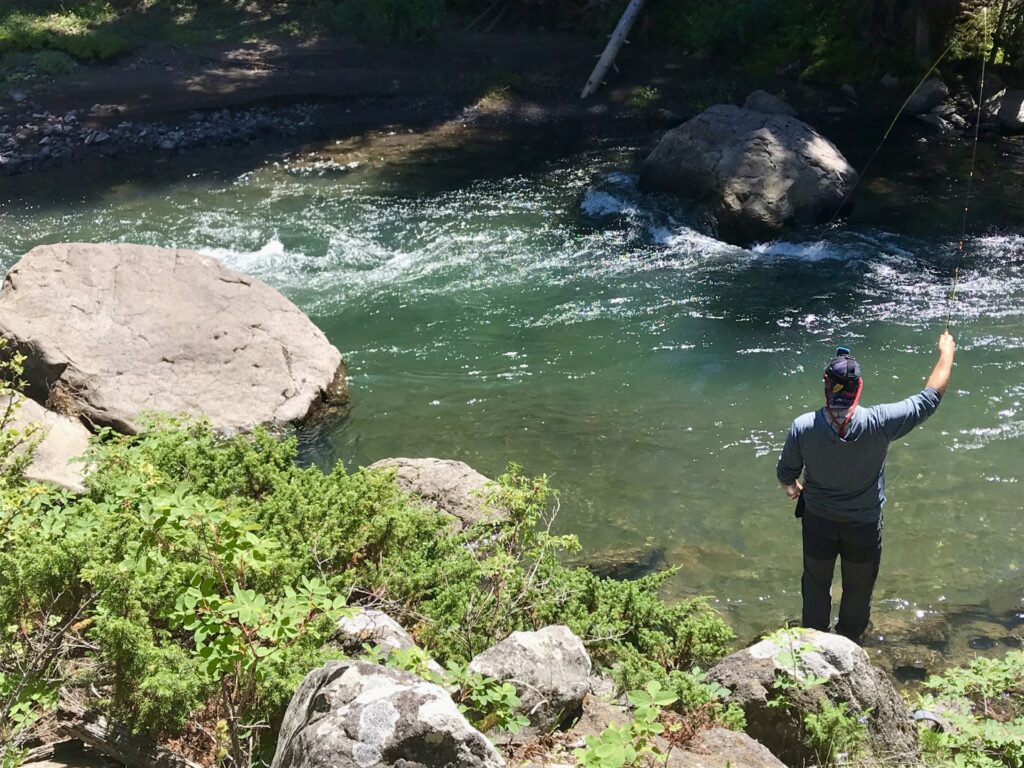
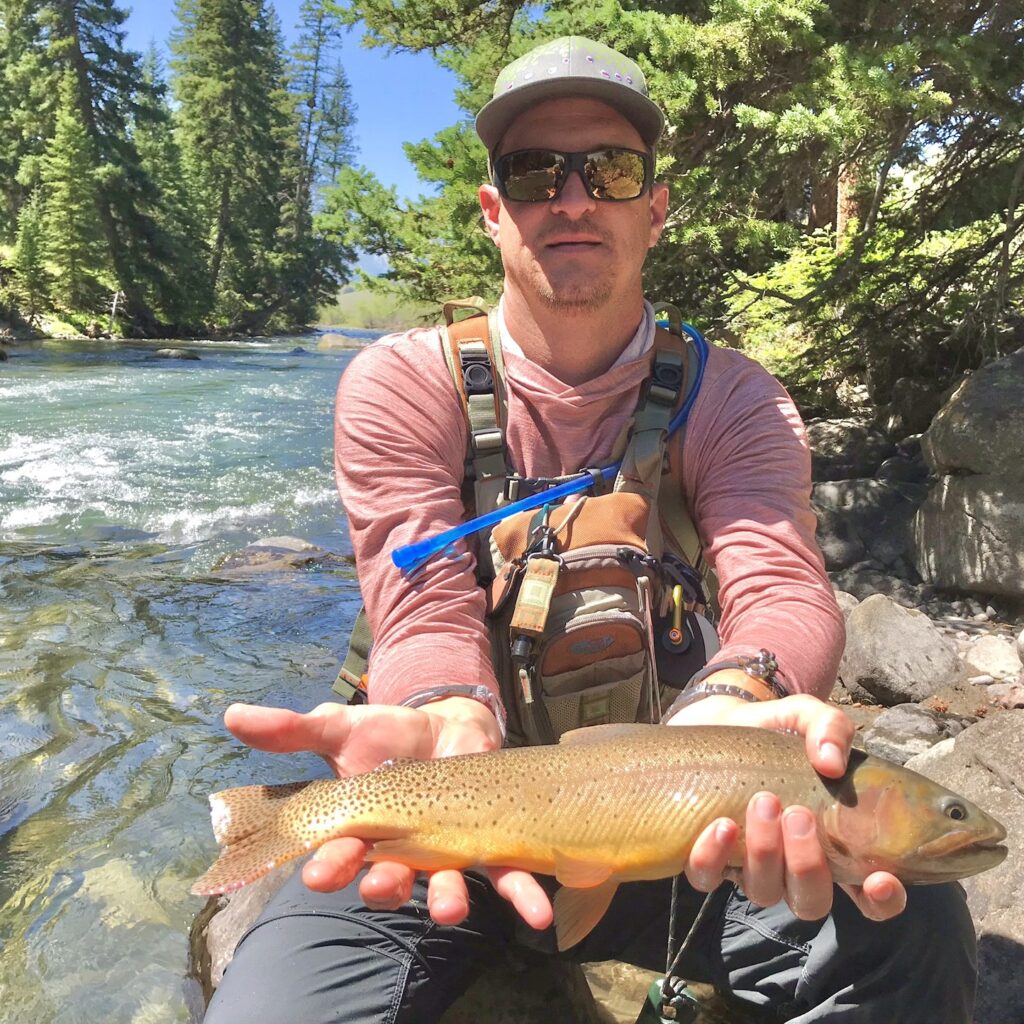
Little did I know my fortunes would quickly change. Joel’s nymph snagged on some rocks and he broke off while trying to free his line. While he re-rigged, I climbed down to try my luck. On the second drift I saw my dry fly disappear and quickly lifted my rod tip. A really nice fish had taken the size 12 beadhead Prince nymph. The current was fast, the fish was strong, and there was no guarantee it would come to net. Yellowstone NP fishing regulations require the use of barbless hooks and this increased the likelihood the fish might shake free. I was able to guide the fish downstream into calmer water near the tail of the pool. As Joel skillfully guided that beautiful fish into the net, I was ecstatic. We both admired the 18″ Yellowstone Cutthroat Trout. It represented my third cutthroat subspecies caught in its native watershed. As my brain raced from the rush of adrenaline I realized an even more satisfying fact, “I just caught a native trout in Yellowstone National Park! It doesn’t get any better than this.”
Native Trout: Yellowstone Cutthroat

Yellowstone National Park is indeed a world-class fishery. With over 220 lakes and 2600 miles of streams, Yellowstone is an angler’s paradise. Twelve species (or subspecies) of native fish call Yellowstone National Park home. Four of these (Arctic grayling, mountain whitefish, westslope cutthroat trout, and Yellowstone cutthroat trout) can be pursued by anglers within the park’s boundaries. Yellowstone cutthroat trout (Oncorhynchus clarkii bouvieri) are by far the most widely distributed native fish in the park. The Yellowstone cutthroat are a keystone species in the greater Yellowstone ecosystem. Dozens of park animals including bears, otters, and eagles use these native fish as a food source. These fish are vital to the overall health of the ecosystem. Like other native trout, Yellowstone cutthroat trout have disappeared from a large portion of their original range.
Like other native fish, Yellowstone cutthroat trout have disappeared from a large portion of their original range. State and federal agencies assign the Yellowstone cutthroat trout as a “Species of Concern”. In recent years, National Park Service biologists have prioritized the restoration of native trout. Streams in the Northeast corner of Yellowstone are part of a Native Trout Conservation Area where non-native trout must be killed rather than returned. All the fish we encountered while fly fishing Yellowstone’s Soda Butte Creek were native cutthroat trout.
